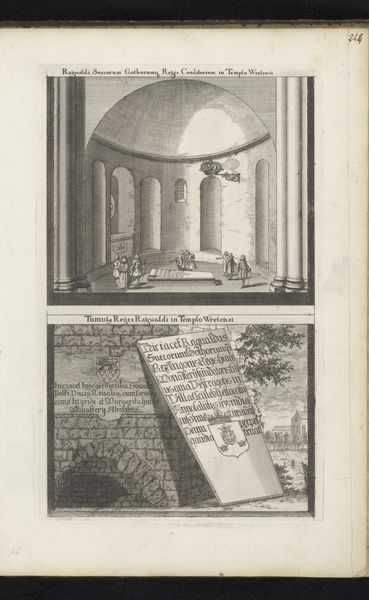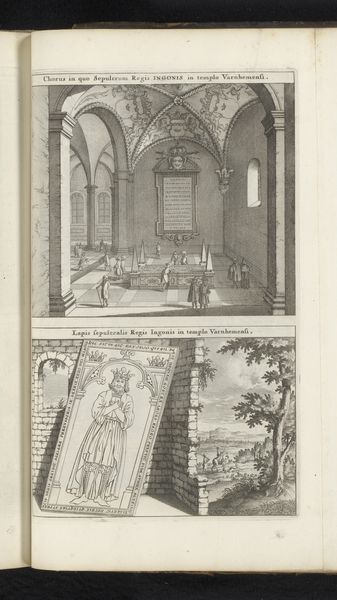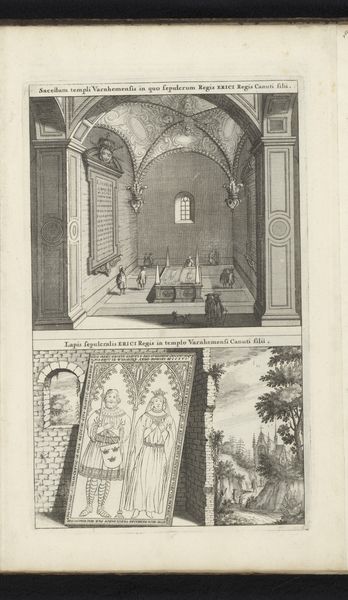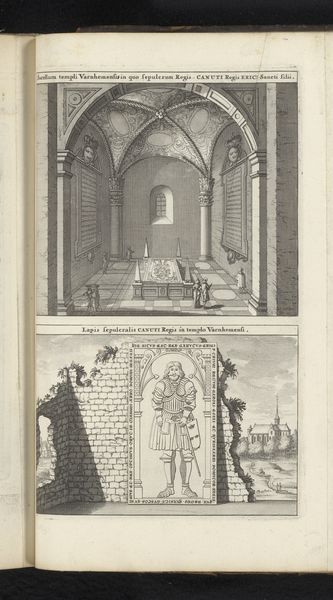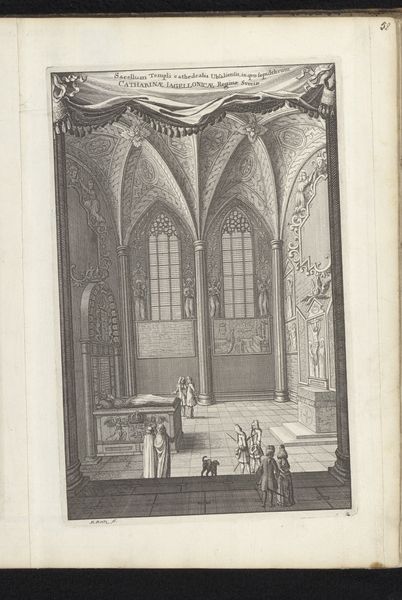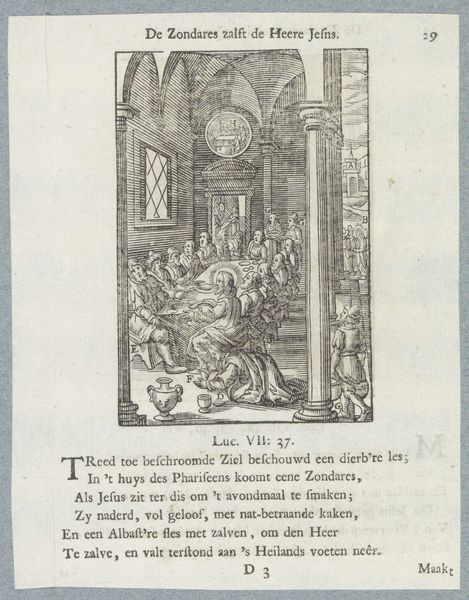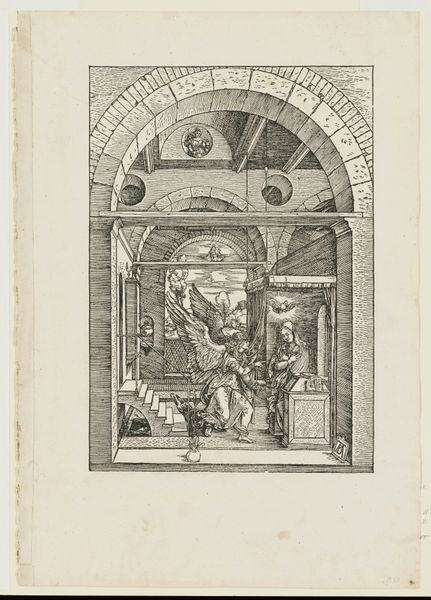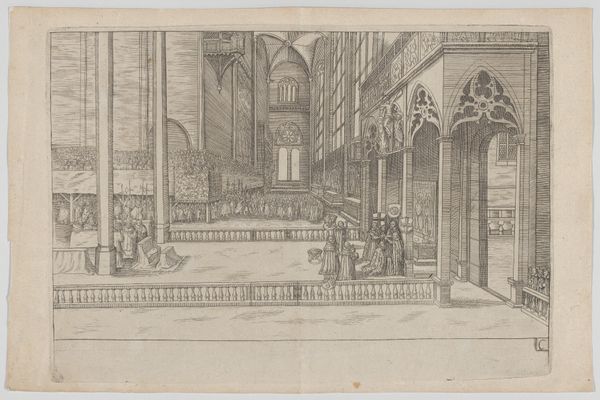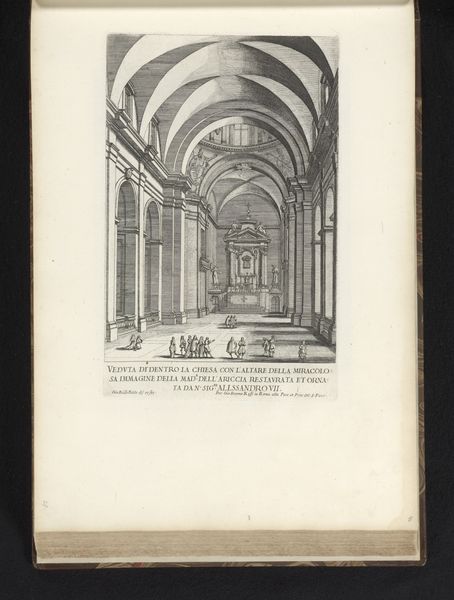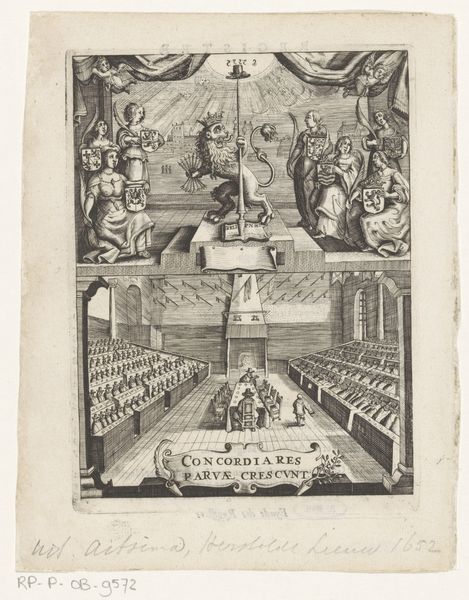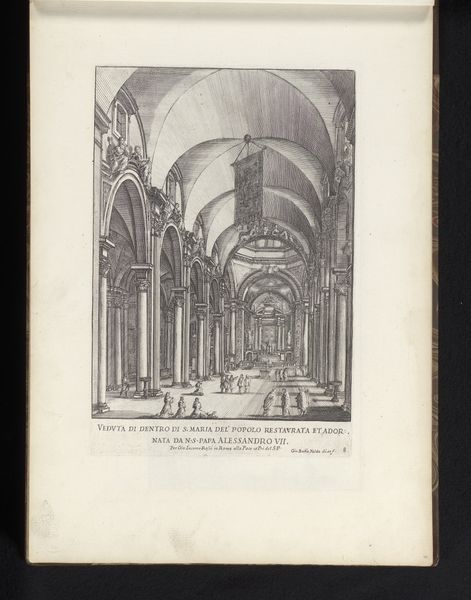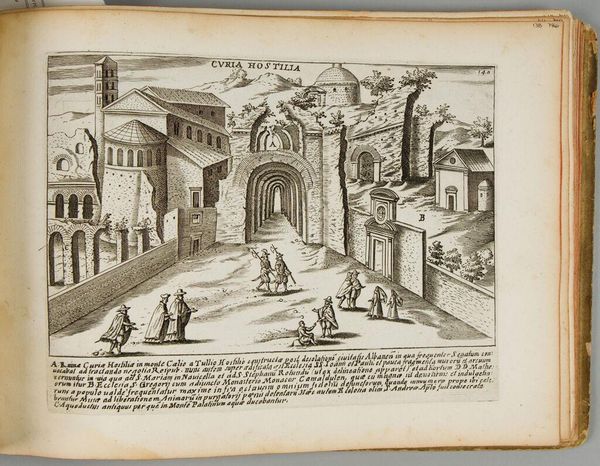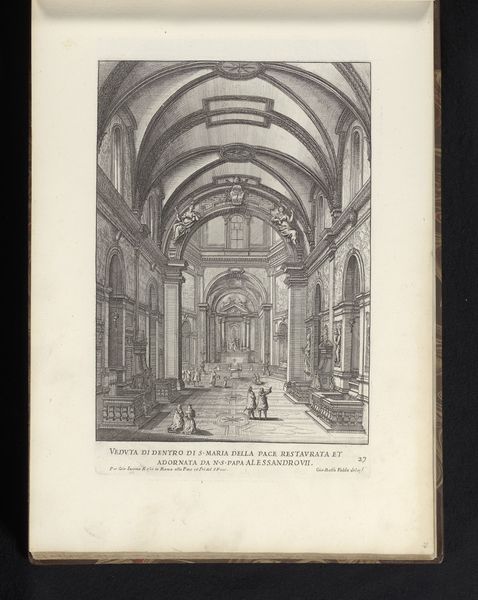
Kapel en grafsteen van koning Magnus Nilsson in de Vreta kloosterkerk 1692
0:00
0:00
graphic-art, print, engraving
#
graphic-art
#
baroque
# print
#
landscape
#
geometric
#
line
#
history-painting
#
engraving
Dimensions: height 266 mm, width 165 mm
Copyright: Rijks Museum: Open Domain
Curator: This print, residing here at the Rijksmuseum, presents "Kapel en grafsteen van koning Magnus Nilsson in de Vreta kloosterkerk" – Chapel and gravestone of King Magnus Nilsson in Vreta Church—created in 1692 by Willem Swidde. My initial reaction centers on its bifurcated composition. Two distinct scenes, unified by the artist's hand. Editor: Immediately striking is the rigid geometry used here—starkly delineating sacred space in the chapel and a sort of idealized exterior. What fabrication and engraving methods were involved in reproducing it do you think? Curator: Indeed, the use of line is particularly pronounced. The upper register provides an interior view—figures within a vaulted chapel. The composition adheres to classical ideals: symmetry, balance, order. Note the crown suspended above what is presumably King Magnus’s tomb. Its centrality dictates a formalist reading relating to power and the divine right of kings. Editor: Yes, there is the presence of that regal crown. The meticulous engravings—down to the etched words and emblem alongside the crude stacking of massive blocky stones—reveal how even potent symbols could be cheaply manufactured on paper for mass consumption. Think about who it's for—it’s the raw, materialized form of the graphic, printed presumably for distribution of some sort. The labor involved must have been tremendous! Curator: Labor is indeed an element here, a consequence of the method—yet to emphasize this process seems secondary to Swidde's formal construction, creating symbolic tension and harmony. Editor: I might differ in this thought; without an awareness of who might consume such a reproduction, you ignore a powerful aspect of how an audience reinterprets royal legitimacy. If this wasn’t readily produced or available, perhaps one looks more at that "symbolic tension and harmony." Curator: I concede that these avenues are valuable to consider for understanding Swidde's engraving in full; both are quite valid lenses. Editor: Ultimately, reflecting on Swidde's artwork directs one to the inherent duality of art creation, one made through symbolic form while needing cheap industrial labor for mass appeal.
Comments
No comments
Be the first to comment and join the conversation on the ultimate creative platform.
